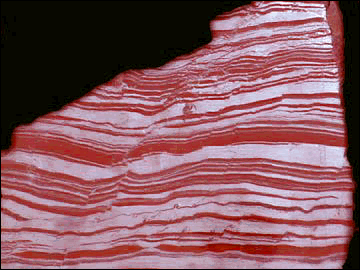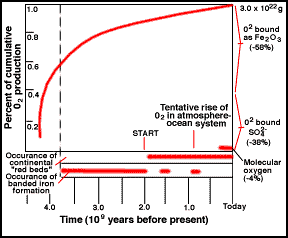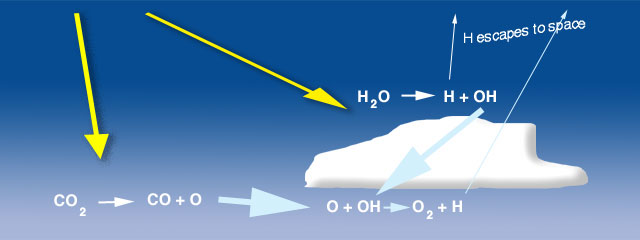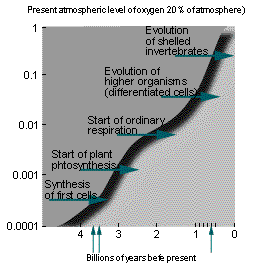Recommended: "Poetics of the Flesh:" I have contended for sometime - commencing with my biblical education in undergraduate studies at a bible university - that "flesh" (sarx) and "body" (soma) are intricately intra-connected between the "law of God" and the "law of sin" with no ability to separate the two concepts so simply as many theologies have implied. Here, in Mayra Rivera's review, she does the same while moving the discussion into a postmodern context of inter-relateability of the human soul as it develops through childhood's naive position of "self" to its maturing "mirrored" reflection of "self in the eyes of others," however rightly or wrongly obtained from the words and reactions of others. Others who may bear the best of intentions or the worst of intentions as forebearers of either "life" or "death" to the souls they speak to. All the while this discussion flows between a redefining of how the ancient Greek concepts of flesh and body contemporarily interacts with the wholeness of our being, persona, social relations, and the world itself, including the Creator of this world we live and breathe. In the echoing reflections of NT Wright one might hear the words of "Well done" to Mayra's reconceptions of blending a Greek culture's binary concepts of the world into a unifying whole so emphasized by the earlier Jewish/Semetic custom of "oneness" to the "duality of life" expressed in more blatant Western contexts. As such, to those requiring a new, more maturer, outlook upon the old theologies we have grown up with I would recommend this study.
R.E. Slater
August 17, 2018
OLD 20TH CENTURY CHRISTIAN ILLUSTRATIONS
OF "BODY-SOUL-SPIRIT"
 |
| Old Bible Illustration of the Parts of Man, by Dispensational Theologican Clarence Larkin |
 |
| Old Bible Illustration of the Parts of Man, by Dispensational Theologican Clarence Larkin |
 |
| Old Bible Illustration of the Parts of Man, by the 20th Century Church |
 |
| Old Bible Illustration of the Parts of Man, by the 20th Century Church |
BOOK BLURB
In "Poetics of the Flesh "Mayra Rivera offers poetic reflections on how we understand our carnal relationship to the world, at once spiritual, organic, and social. She connects conversations about corporeality in theology, political theory, and continental philosophy to show the relationship between the ways ancient Christian thinkers and modern Western philosophers conceive of the "body" and "flesh.” Her readings of the biblical writings of John and Paul as well as the work of Tertullian illustrate how Christian ideas of flesh influenced the works of Maurice Merleau-Ponty and Michel Foucault, and inform her readings of Judith Butler, Frantz Fanon, and others. Rivera also furthers developments in new materialism by exploring the intersections among bodies, material elements, social arrangements, and discourses through body and flesh. By painting a complex picture of bodies, and by developing an account of how the social materializes in flesh, Rivera provides a new way to understand gender and race.
 |
| Amazon link |
Review of Poetics of the Flesh
by "Reading Religion,"
a Publication of AAR (American Academy of Religion)
Title: Poetics of the Fles
Author: Mayra Rivera
Publication Date: October 2015
Publisher: Duke University Press, Durham, NC, USA
216 pages.
Paperback.
ISBN - 9780822360131
For other formats: Link to Publisher's Website.
Reading Religion Review
Mayra Rivera guides readers of Poetics of the Flesh on a journey through the rich and diverse understandings of flesh and body in the Western Christian tradition. The monograph is divided into three parts: Part I, “Regarding Christian Bodies,” examines the concepts of “flesh” (sarx) and “body” (soma) in John’s Gospel, Paul’s letters, and Tertullian’s writings; Part II, “The Philosophers’ (Christian) Flesh,” “focuses on flesh as dynamic relation between the body and the world” (58) through the writings of Maurice Merleau-Ponty and critiques by Michel Foucault, Jean-Luc Nancy, and Luce Irigaray; Part III, “A Labyrinth of Incarnations,” analyzes the particular ways in which flesh is shaped by the world, interlaced with social identities and social perceptions of bodies (114). Many voices join the discussion here, with primary attention given to Frantz Fanon, Aimé Césaire, and Judith Butler. Although it is a challenging read, this book constructively advances theological anthropology and material discourses by creatively (re)making (poiesis) words that become flesh.
As Rivera explains, “Poetics of the Flesh is inspired by the practice of Édouard Glissant’s Poetics of Relation” (2). Rivera cites Derek Walcott’s description of Glissant’s poetics, which is analogously compared to lovingly gathering and reassembling the pieces of a broken vase. Rivera approaches the texts, which range from Greek scriptures to continental phenomenology to Caribbean poetry, “as part of ongoing, sometimes painful processes of remaking visions of corporeality—out of pieces of shattered histories and shards of vocabulary” (4). Indeed, this analogy of carefully and creatively (re)constructing a theology of flesh well describes Rivera’s text. She begins this process by problemetizing, with Sharon Betcher, the recent theological turn to the body which sometimes “represents the unattainable stability that social norms demand but that corporeality cannot mirror” (7). Poetics of the Flesh offers a theological response to Betcher’s call to “learn to think flesh without ‘the body’” (7).
While some readers (including myself, I confess) may be initially frustrated by Rivera’s refusal to clearly distinguish between “flesh” and “body” in her introductory chapter, it gradually becomes evident that doing so would undermine the project as a whole. “Words do not simply mirror what is, or express the thoughts and desires of a person, but rather shape reality and subjectivity. . . . We are interested in processes of materialization—not just in matter” (9). Re-reading the introduction, having read the body of Rivera’s text, I now recognize that any facile attempt at the outset to define the words “body” and “flesh” would obscure not only their complex genealogies but also the subtleties of becoming flesh that are (in some ways) continued and (in other ways) initiated by Rivera’s poetic processes of materialization in which the reader becomes ever more intertwined and interlaced.
Chapter 1, as one might expect, examines the term “flesh” in John’s Gospel. Far from a philological analysis of sarx, however, Rivera’s thematic trek through the Fourth Gospel incorporates interpretations by Karmen MacKendrick, Tat-siong Benny Liew, and others. Most notably, she draws upon liberationist readings of Bartolomé de las Casas and the “elemental materiality [that] connects the bodies of workers with shared bread, with consecrated bread” (23). The gospel, Rivera asserts, resists attempts to literally or figuratively separate word, flesh, spirit, and bread—all the while interlacing boundaries between individual and societal bodies.
Distinctions between flesh (sarx) and body (soma) are simultaneously sharpened and blurred through Rivera’s examination of the Pauline Epistles (chapter 2). For Paul, metaphysically transcendent spiritual bodies enslaved to the “law of God” stand in contrast to flesh enslaved to the “law of sin” (36, citing Romans 7:25). In chapter 3, Rivera traces “the affirmative images of flesh [in Tertullian’s writings], as they unfold from the poetics of the Gospel of John and the letters of Paul” (44). Here, the logic of poetics operates on two levels: within Tertullian’s corpus and in Rivera’s revitalization thereof. Without excusing or condemning Tertullian’s gendered hierarchies, Rivera demonstrates that the gender rift undermines his argument: “unless you can embrace your own flesh, and its beginnings in the flesh of another, you cannot love other fleshly beings—nor can you understand the incarnation” (53).
While the intricacies of Part II can hardly be summarized in this brief review, one moment strikes me as an especially poignant passage from the heart of the text. In a section entitled “intercorporeal engagements,” Rivera highlights Merleau-Ponty’s analysis of child psychology. In the developmental transition from subjective indistinction to individuality (a process which Merleau-Ponty insists “is never completely finished” (68)), a child enters the “mirror stage.” “In recognizing her image in the mirror,” explains Rivera, “the child learns that there can be a viewpoint taken on her. The child notices that she is visible, to herself and to others” (69). “[M]y experience of my body,” she continues, “is always already entwined with images that others have of me. . . . I borrow myself from others” (70).
Personally, I only truly began to grasp Rivera’s constructive theology of flesh at this point in the text. Unless I am misreading and perhaps making too much of but one passage, I would have preferred some foreshadowing of this moment—which is woven through later portions of the text—in the introduction. Rivera performs an apophatic phenomenology of multiplication (contra negation) through which touching flesh intertwines as a desire for the “you in me and the me in you” (77, John 14:20). This interlacing of inner and social identities informs Rivera’s reading of Frantz Fanon’s critique of Merleau-Ponty and—even more rewardingly—Fanon’s reading of fellow Martinican Aimé Césaire. Rivera, who later offers a critique of Simone de Beauvoir, notes that these authors become black and become gendered as “effects of the white gaze” (129).
Mayra Rivera’s Poetics of the Flesh is (for me, at least) a challenging text that is well worth the effort and attention it demands of its reader. The difficulty it poses is due to the richly profound space it opens for a carnal theology in which the reader is always already entangled and involved. The monograph might be faulted for omitting any engagement (critical or otherwise) with the writings of Jean-Luc Marion, which also explore Merleau-Ponty’s sensual phenomenology of flesh from a postmodern theological perspective. Nevertheless, Rivera’s text makes significant and noteworthy advancement, not only in theological anthropology, critical theory, and materiality, but also in an apophatic theology grounded in the immanent indeterminacy of multiplicity and relational, worldly ontology. While the book is unlikely to find its way onto undergraduate syllabi, it can be considered an enjoyable “must read” for many theologians, philosophers, and advanced graduate students.
About the Reviewer
Brad Bannon is an adjunct professor of theology at Fitchburg State University.
Date of Review: May 30, 2016
About the Author
Mayra Rivera is Associate Professor of Theology and Latina/o Studies at Harvard University and the author of The Touch of Transcendence: A Postcolonial Theology of God.




















